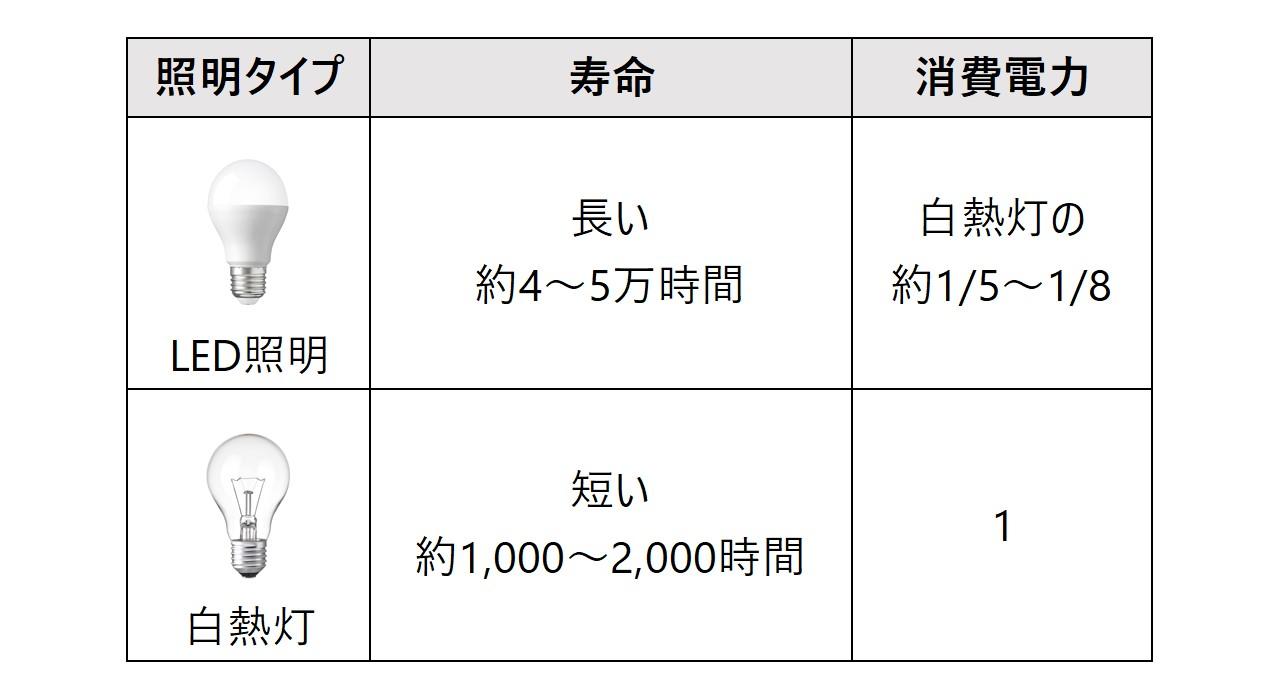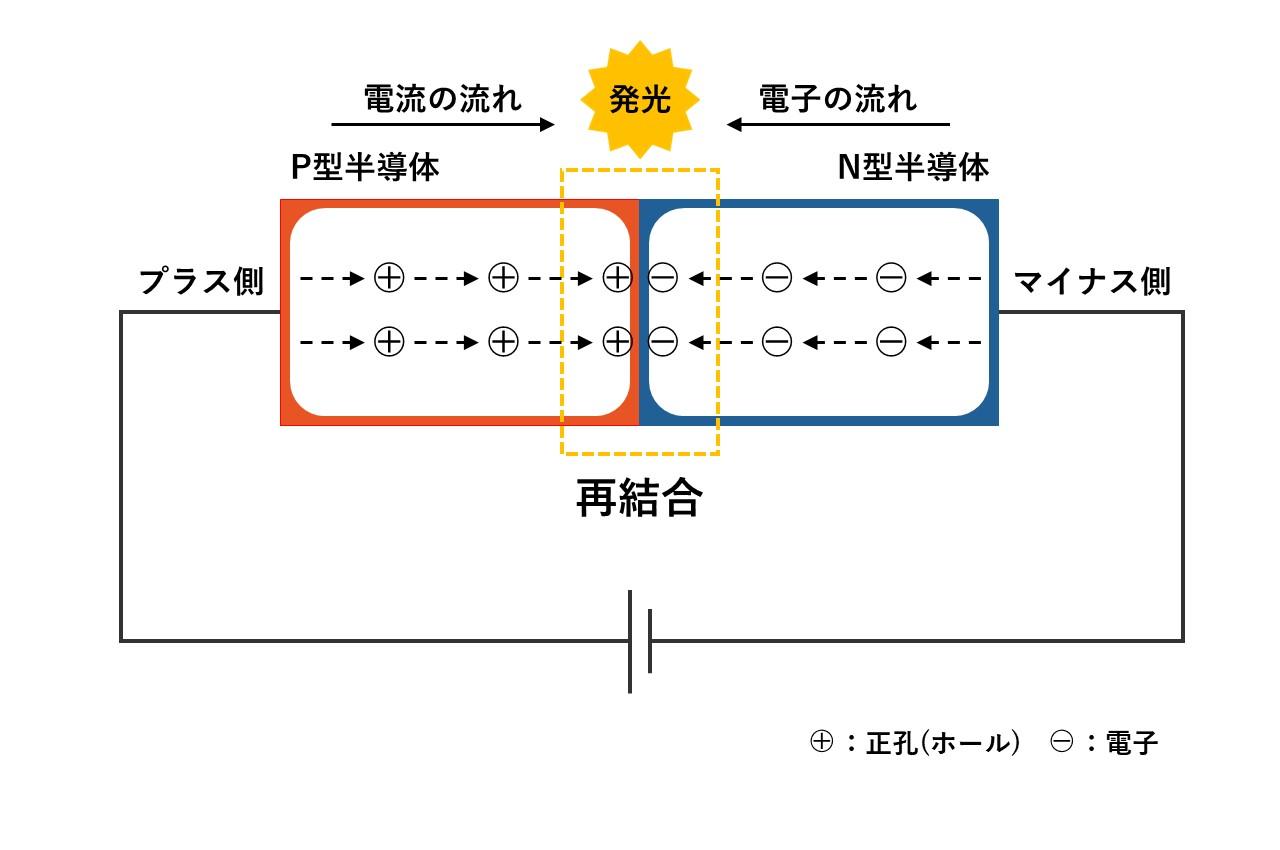
why? Reasons to switch to LED lighting
Reasons to switch to LED lighting
In recent years, the use of LED lighting has been progressing all around us, such as offices, residences, and public facilities.
Why are you switching to LED lighting?
The reason for this is that LEDs are more "energy efficient" than conventional lighting, and the "mercury" contained in lighting has a lot to do with it.
What are LEDs?
LED is an abbreviation for "Light Emitting Diode" and is generally called "LED" or "light emitting diode" in Japan.
One of the characteristics of LEDs is that they emit light when electricity is applied, but when LEDs first appeared, they were only available in colors such as red and yellow. However, with the development of blue LEDs, it became possible to create white light, and it has a history of being used for lighting.
Why are LED lights energy efficient?
Why are LED lights more energy efficient than incandescent lights? There is a big difference between LED lighting and old-fashioned incandescent lamps in terms of "lifetime" and "power consumption."
LED lighting VS incandescent lighting

▶ Lifespan
While incandescent lamps are said to have a lifespan of approximately 1,000 to 2,000 hours, LED lighting has a long lifespan of approximately 40,000 to 50,000 hours.
▶ Power consumption
Compared to incandescent lamps, LED lighting has better luminous efficiency, and the power consumption of LED lighting is generally 1/5 to 1/8 of that of incandescent lamps.
The key to achieving "longer life" and "energy saving" than conventional lighting is the "light emission mechanism".
An incandescent lamp works by passing an electric current through a filament inside the lamp to generate heat and emit light. In other words, most of the electricity added to an incandescent lamp is converted into heat instead of light, so the luminous efficiency is poor and it is not energy-saving compared to LED lighting. LED lighting, on the other hand, emits light through the recombination of holes and electrons, so much of the electricity that is added is converted into light and produces less heat than an incandescent lamp. This results in high luminous efficiency and energy saving.
The next point is "heat".
The filament of an incandescent lamp deteriorates due to heat when it emits light, so it will eventually burn out and stop glowing. LED lighting has no filament like incandescent lamps and generates less heat, resulting in longer life.
Triggered by regulations on mercury-containing products
Another reason for switching to LED lighting is the regulation of mercury-containing products.
Minamata Convention on Mercury
In 2002, the United Nations Environment Program (UNEP) published a report on the effects of mercury on humans and the environment (Global Mercury Assessment). In order to reduce the risks listed on the left, an international treaty, the Minamata Convention on Mercury, was agreed in 2013 to protect human health and the environment from anthropogenic emissions and releases of mercury and mercury compounds. (Effective: 2017)
In order to implement this convention accurately and smoothly, the "Law Concerning the Prevention of Environmental Pollution by Mercury" was enacted, regulating the manufacture, export, and import of products that use mercury. . (*1) One of the products subject to the regulation is lighting that contains more than a certain amount of mercury, and lighting manufacturers have stopped producing mercury lamps.
Lighting containing mercury will be difficult to obtain, so we will have to switch to LED lighting in the future.
*1: Some products are not subject to regulation
|
Specified Mercury Products |
Regulation start date |
competent minister |
|
|
January 1, 2018 |
December 31, 2020 |
||
|
(3) Compact fluorescent lamps and self-ballasted fluorescent lamps for general lighting (limited to lamps containing more than 5 milligrams of mercury per arc tube and rated power consumption of 30 watts or less) |
● |
ー |
Minister of Economy, Trade and Industry |
|
(4) Among straight tube fluorescent lamps for general lighting, the following (a) Those that contain more than 5 milligrams of mercury per piece and that have a rated power consumption of less than 60 watts, and that use three-wavelength phosphors (b) Those that contain more than 10 milligrams of mercury per unit and have a rated power consumption of 40 watts or less, and that use phosphors whose main component is halophosphate. |
● |
ー |
|
|
(5) High-pressure mercury lamps for general lighting |
ー |
● |
|
Source 1: Ministry of Economy, Trade and Industry
Operational Guide for Regulations on Specified Mercury-Used Products with the Minister of Economy, Trade and Industry as the Competent Minister Based on the Act on Prevention of Environmental Pollution by Mercury (2nd Edition)
https://www.meti.go.jp/policy/chemical_management/int/tebiki2.do
Source 2: Ministry of Economy, Trade and Industry
Law Q&A on Prevention of Environmental Pollution by Mercury
https://www.meti.go.jp/policy/chemical_management/int/files/mercury/mercury_qa2.pdf
Learn more about LEDs
Principle of LED

An LED has a structure in which a P-type semiconductor with many holes and an N-type semiconductor with many electrons are connected.
When a forward voltage (positive voltage on the P side and negative voltage on the N side) is applied in this state, holes in the P-type semiconductor move toward the junction, and electrons in the N-type semiconductor also move toward the junction. To do. The holes and electrons then recombine at the junction and emit light.
Also, the color of light emitted at this time varies depending on the materials used in the LED, and is determined by the bandgap, which is the energy difference between the conduction band and the valence band.
What are COBs and SMDs? merit and demerit
< COB Chip On Board >
A COB is generally a module in which multiple LED chips are mounted on a board made of materials such as aluminum, and one of its features is its high heat dissipation performance.
▶ Benefits: It is possible to handle high brightness because it is mounted in high density.
▶ Disadvantage: Cost is higher than SMD because it takes time to manufacture.
< SMD Surface Mount Device >
SMD is an acronym for Surface Mount Device.
One of the characteristics of SMD is that the electrode part of the LED chip is soldered to the substrate, and it can be turned on and off by soldering, so it is easy to manufacture.
▶ Benefits: LED chips can be arranged freely, and manufacturing does not take much time.
▶ Disadvantages: Since the brightness of one LED chip is low, many LED chips are required to support high brightness.
